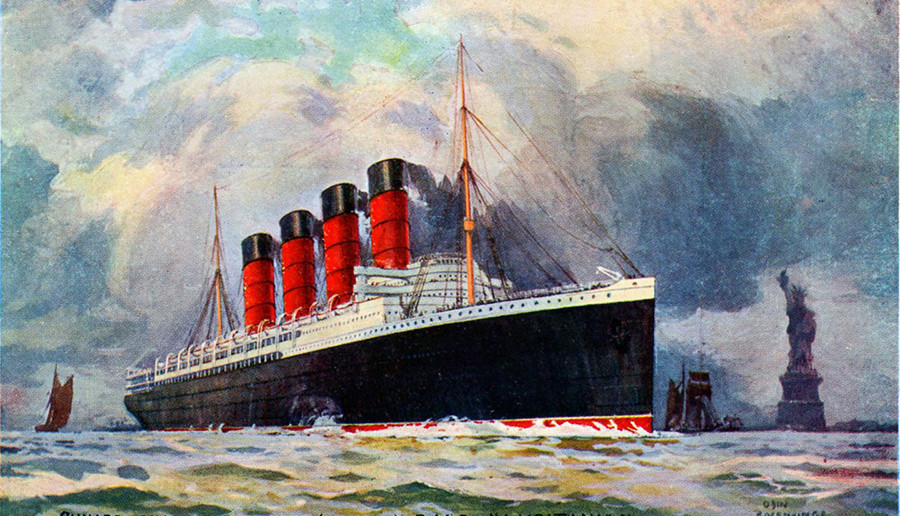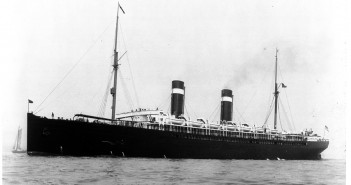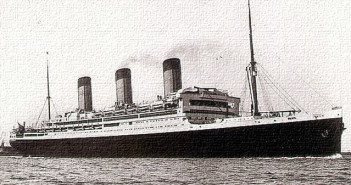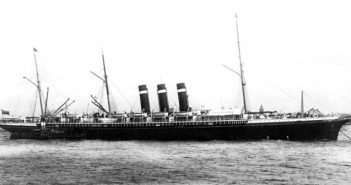Naval architect Leonard Peskett created a true floating palace. Lusitania featured seven passenger decks and palatial accommodations, including hand-carved oak furniture, fine linens and silks, and the best of everything, from soap to liquor to silverware. Third class passengers were also rewarded with a new level of relative luxury, being accommodated in in four- or six-berth cabins rather than “open berths.”
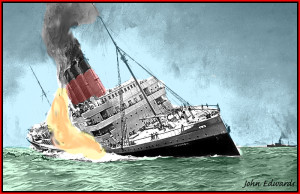 Like many other liners of her era, Lusitania was designed to serve as an armed merchant cruiser in wartime. To this end she was configured to carry 12 rapid-firing 6-inch guns. Gun mounts, installed under her teak decking during a 1913 refit, were ready for use when needed. Speaking at the launch, the shipyard’s deputy chairman, Sir Charles MacLaren, observed that Lusitania was not only the largest, speediest, safest, and most luxurious liner ever built, but that with with minor alterations she had the potential to become the world’s fastest and most powerful armed cruiser.
Like many other liners of her era, Lusitania was designed to serve as an armed merchant cruiser in wartime. To this end she was configured to carry 12 rapid-firing 6-inch guns. Gun mounts, installed under her teak decking during a 1913 refit, were ready for use when needed. Speaking at the launch, the shipyard’s deputy chairman, Sir Charles MacLaren, observed that Lusitania was not only the largest, speediest, safest, and most luxurious liner ever built, but that with with minor alterations she had the potential to become the world’s fastest and most powerful armed cruiser.
Yet she he never got a chance to prove her fighting prowess. While still in service for Cunard Line on 7 May 1915, Lusitania was struck and sunk by a torpedo fired by a German U-boat.
To continue, click the NEXT button on the top of this page.

